1,1-DICHLOROPROPANE
- CAS NO.:78-99-9
- Empirical Formula: C3H6Cl2
- Molecular Weight: 112.99
- MDL number: MFCD00074845
- EINECS: 201-165-3
- SAFETY DATA SHEET (SDS)
- Update Date: 2023-04-23 13:52:06

What is 1,1-DICHLOROPROPANE?
The Uses of 1,1-DICHLOROPROPANE
1,1-Dichloropropane was used in the synthesis of chloropropenes by undergoing flash vacuum pyrolysis over magnesium.
What are the applications of Application
1,1-Dichloropropane is can be used in the synthesis of chloropropenes
General Description
Colorless watery liquid with a sweet odor. Sinks in water. Produces irritating vapor.
Air & Water Reactions
Highly flammable.
Reactivity Profile
Halogenated aliphatic compounds, such as 1,1-DICHLOROPROPANE, are moderately or very reactive. Reactivity generally decreases with increased degree of substitution of halogen for hydrogen atoms. Low molecular weight haloalkanes are highly flammable and can react with some metals to form dangerous products. Materials in this group are incompatible with strong oxidizing and reducing agents. Also, they are incompatible with many amines, nitrides, azo/diazo compounds, alkali metals, and epoxides.
Health Hazard
INHALATION: May cause some central nervous system depression. EYES: May cause some pain and irritation. SKIN: Mild irritation.
Fire Hazard
Special Hazards of Combustion Products: Emits fumes of phosgene
Properties of 1,1-DICHLOROPROPANE
| Melting point: | -83.56°C (estimate) |
| Boiling point: | 88 °C (lit.) |
| Density | 1.13 g/mL at 25 °C (lit.) |
| refractive index | n |
| Flash point: | 45 °F |
| solubility | organic solvents: soluble(lit.) |
| Merck | 13,7953 |
| CAS DataBase Reference | 78-99-9 |
| EPA Substance Registry System | 1,1-Dichloropropane (78-99-9) |
Safety information for 1,1-DICHLOROPROPANE
| Signal word | Danger |
| Pictogram(s) |
 Flame Flammables GHS02  Exclamation Mark Irritant GHS07  Health Hazard GHS08 |
| GHS Hazard Statements |
H225:Flammable liquids H315:Skin corrosion/irritation H319:Serious eye damage/eye irritation H332:Acute toxicity,inhalation H335:Specific target organ toxicity, single exposure;Respiratory tract irritation H351:Carcinogenicity |
| Precautionary Statement Codes |
P201:Obtain special instructions before use. P210:Keep away from heat/sparks/open flames/hot surfaces. — No smoking. P302+P352:IF ON SKIN: wash with plenty of soap and water. P305+P351+P338:IF IN EYES: Rinse cautiously with water for several minutes. Remove contact lenses, if present and easy to do. Continuerinsing. P308+P313:IF exposed or concerned: Get medical advice/attention. |
Computed Descriptors for 1,1-DICHLOROPROPANE
New Products
4-Aminotetrahydropyran-4-carbonitrile Hydrochloride (R)-3-Aminobutanenitrile Hydrochloride 4-AMINO-TETRAHYDRO-PYRAN-4-CARBOXYLIC ACID HCL 4-(Dimethylamino)tetrahydro-2H-pyran-4-carbonitrile 3-((Dimethylamino)methyl)-5-methylhexan-2-one oxalate 1,4-Dioxa-8-azaspiro[4.5]decane 5-Bromo-2-nitropyridine Nimesulide BP Aceclofenac IP/BP/EP Mefenamic Acid IP/BP/EP/USP Diclofenac Sodium IP/BP/EP/USP Ornidazole IP Diclofenac Potassium SODIUM AAS SOLUTION ZINC AAS SOLUTION BUFFER SOLUTION PH 10.0(BORATE) GOOCH CRUCIBLE SINTERED AQUANIL 5 BERYLLIUM AAS SOLUTION 2-Bromo-1-(bromomethyl)-3-chloro-5-nitrobenzene 2-Bromo-3-nitroaniline N-(3-Hydroxypropyl)-N-methylacetamide 3-Bromo-6-chloropyridazine 4-ethyl-3-nitrobenzoic acidRelated products of tetrahydrofuran
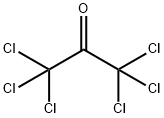
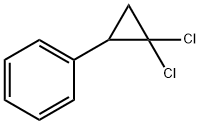
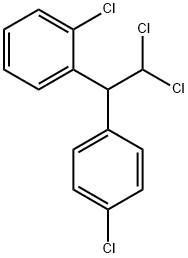

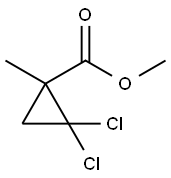
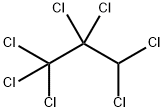

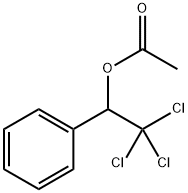
You may like
-
 1,1-Dichloropropane CAS 78-99-9View Details
1,1-Dichloropropane CAS 78-99-9View Details
78-99-9 -
 1-Methyl-6-oxo-1,6-dihydropyridazine-3-carbonitrile 98%View Details
1-Methyl-6-oxo-1,6-dihydropyridazine-3-carbonitrile 98%View Details
99903-60-3 -
 1823368-42-8 98%View Details
1823368-42-8 98%View Details
1823368-42-8 -
 2-(3-(tert-butyl)phenoxy)-2-methylpropanoic acid 1307449-08-6 98%View Details
2-(3-(tert-butyl)phenoxy)-2-methylpropanoic acid 1307449-08-6 98%View Details
1307449-08-6 -
 Ethyl 3-(furan-2-yl)-3-hydroxypropanoate 25408-95-1 98%View Details
Ethyl 3-(furan-2-yl)-3-hydroxypropanoate 25408-95-1 98%View Details
25408-95-1 -
 2-Chloro-5-fluoro-1-methoxy-3-methylbenzene 98%View Details
2-Chloro-5-fluoro-1-methoxy-3-methylbenzene 98%View Details
1805639-70-6 -
 1784294-80-9 98%View Details
1784294-80-9 98%View Details
1784294-80-9 -
 Lithium ClavulanateView Details
Lithium ClavulanateView Details
61177-44-4